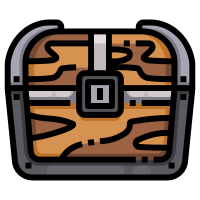Generate color names
Get ideas- <% result.name %>
Discover all Story Shack apps
Discover the Palette of Your Imagination
Color can evoke emotions, tell stories, and bring ideas to life. Use these thought-provoking questions to inspire unique and vibrant color names that reflect your creative vision.
- What feelings or moods do you want your color to evoke?
- What natural elements or landscapes inspire the hue you envision?
- How would you describe the personality of the color—bold, gentle, mysterious?
- What cultural or historical references can influence the name of your color?
- What imagery or associations come to mind when you think of this color?
Frequently Asked Questions
Explore answers to common inquiries about the Color Name Generator and how it can spark your creativity.
How does the Color Name Generator work?
It randomly combines various themes, emotions, and inspirations to create unique color names with every click.
Can I specify the type of color name I want?
Currently, you cannot specify; however, you can keep generating until you find a name that resonates with your vision.
Are the color names unique?
The names are generated randomly, providing a diverse range of options; some may be similar, but many will be unique.
How many color names can I generate?
You can generate an unlimited number of color names by clicking 'Generate' as often as you like.
How do I save my favorite color names?
You can easily copy a color name by clicking on it, or save it using the heart icon for later inspiration.
What are good color names?
There's thousands of random color names in this generator. Here are some samples to start:
- Heathered Gray
- Midnight Moss
- Vivid Violet
- Aero Blue
- Tusk
- Walnut
- Plantation
- Blumine
- Zorba
- Blush Pink
More on color names across the web
Can't get enough of generating color names? Then continue exploring:
About the creator
All idea generators and writing tools on The Story Shack are carefully crafted by storyteller and developer Martin Hooijmans. Originally from the Netherlands, I nowadays live with my wife and child in the south of Germany. During the day I work on tech solutions for mobility provider Flix. In my free hours I love diving into stories, be it reading, writing, gaming, roleplaying, you name it, I probably enjoy it. The Story Shack is my way of giving back to the global storytelling community. It's a huge creative outlet where I love bringing my ideas to life. Thanks for coming by, and if you enjoyed this tool, make sure you check out a few more below!

